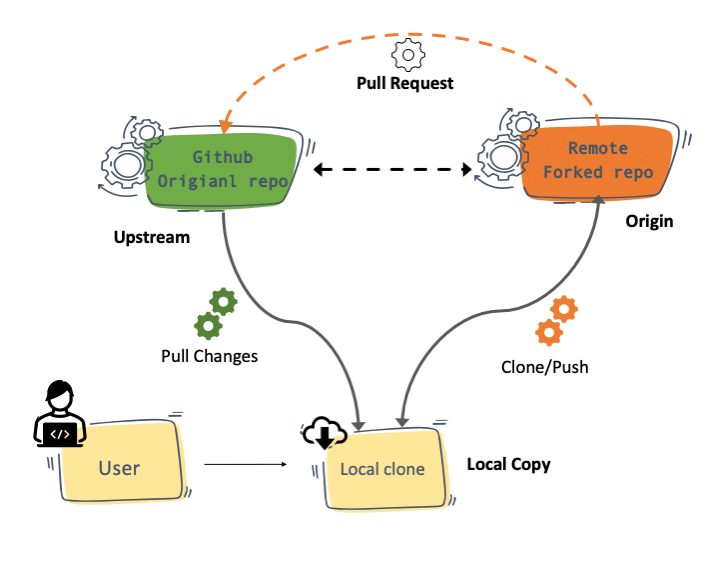

Remote: Compressing objects: 100% (2/2), done. Now we will run the git pull command which will fetch and merge remote master branch into local master branch. Your branch is up-to-date with 'origin/master'. So, first we will checkout the master branch. We can see that the local master branch is behind the remote master branch and so, we will pull the commits from remote to local. In the above image our local master branch is represented in blue and the remote master branch is represented in pink. And those changes are now merged into the master branch of the central repository. Lets say, other developers of our team have committed and pushed their changes to the central repository. Note! We have named the remote central repository connection as origin in our previous tutorial Git Remote - Connecting with repository. So, basically we are running two commands git fetch and git merge using git pull command. So, if we want to fetch and merge master branch from a remote repository into our local repository master branch then, we will first checkout master branch and we will run the git pull command and it will fetch the master branch from the remote repository and will merge it into the master branch of our local repository. We use the git pull command to fetch the commits from a remote repository to our local branch on which we are currently on and then merge the changes. So we fetch and merge commits using one command. The git pull command puts the two into one single command.
#GIT PULL ORIGIN MASTER IN A BRANCH HOW TO#
So in the previous tutorial Git Fetch - Import commits from remote repository we learned how to fetch commits from remote repository using git fetch command and then merge the changes using git merge command.
#GIT PULL ORIGIN MASTER IN A BRANCH FREE#
Interested in learning more? Sign up for a free account.In this tutorial we will learn about Git pull which helps to fetch and merge changes. Using Snyk with GitHubĬontinuously perform security scanning across all the integrated repositoriesĭetect vulnerabilities in your open source components The next time I want to push changes I can just use git push without any parameters. Now the local branch also has a remote counterpart. When I want to push my changes, first I have to use -u or -set-upstream like this: If you’re on a local branch myNewFeature and want to share this branch remotely you have to set the upstream to make it a remote branch. How do I turn my local branch into a remote branch? This can be different, for instance, when you are working with multiple remotes. Note that origin is the standard reference to the original remote repository my project was cloned from.

Your local branch name, myLocalName will be connected to the remote branch remoteName. Git checkout -b myLocalName origin/remoteName If you would check out a remote branch but name it differently on your local machine you can run: This means that there is a local copy of the branch available on your machine.

How do I create a local branch from a remote branch?Īfter a fetch, you can check out the remote branch as mentioned earlier. Now all you need to do is use git checkout. This command downloads the references from your remote repository to your local machine, including the reference to the remote branch. If you want to check out a remote branch someone published, you first have to use git fetch. It is good to mention that git checkout remote branch is not an actual existing command. How do I checkout a remote branch?Ī remote branch is the best way to share your development work with other people in your team. It totally makes sense to do this in a separate level branch that originates from your feature branch. This might sound weird, but imagine you are creating a new feature in a new branch and you want to experiment a bit. Knowing this, you can also make a branch from a branch recursively. Note: when you check out a branch on your local machine, all commits will be on the new branch and not on the main. If you want to work in this branch and commit to it, you need to check out this branch just like before using git checkout dev. When you want to create a new branch from your main branch with the name “dev”, for example, use git branch dev-this only creates the branch. If you already have a branch on your local machine, you can simply check out or switch to that branch using the command git checkout.


 0 kommentar(er)
0 kommentar(er)
